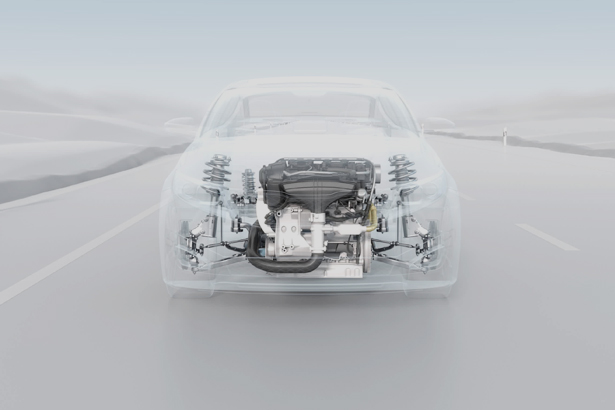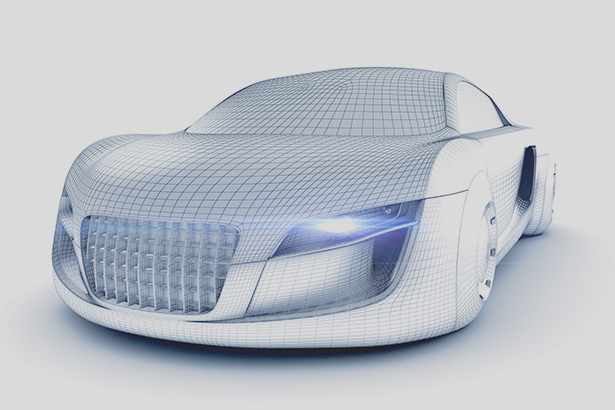Industry Trends
Automobile Simulation Trend
The statistical results show that the wide application of automobile simulation technology greatly reduces the design modification rate at the later stage of automobile R&D and design, greatly reduces the proportion of automobile R&D and design costs to the total automobile development cost, greatly improves the development speed of new automobile models, and greatly improves the return on investment (ROI) of automobile enterprises.
- From deploying high-performance computing resource pools based on peak hours to leasing industrial simulation services on demand
Traditionally, automobile simulation services are constructed based on service peaks. Repeated construction of R&D departments leads to high investment and resource redundancy. Automotive enterprises prefer to rent high-performance computing resources on demand to meet design simulation service requirements, avoiding repeated construction and resource waste.
- From local processing to local and cloud collaborative operation
The R&D departments of automobile enterprises have obvious peaks and troughs of HPC resource requirements. During peak hours, the resource requirements are two to three times higher than those required in normal hours. In this case, the local resource pool cannot meet service requirements. Some service loads need to be flexibly migrated to the cloud for simulation.
- From Silos to Data Sharing
Due to the design of traditional siloed service systems, many data silos exist, which hinders data sharing and unified service management. Hybrid cloud infrastructure is deployed between the headquarters and branches of automobile enterprises to implement unified planning, hierarchical operation, collaborative design, flexible management, data sharing, and unified service processes and standards, implementing systematic and consistent management of applications, data, and services.

Business Challenges
-
Heavy investment and slow construction
Each service department of an automobile enterprise builds resource pools based on service peak requirements to form heavy assets. It takes several months to complete project bidding, system installation and deployment, and smooth rollout. The construction period is long, which cannot meet service development requirements. HUAWEI CLOUD provides capabilities such as out-of-the-box and on-demand resource leasing to reduce heavy asset investment and avoid repeated construction. In addition, services such as automatic cluster creation are provided, and quick delivery can be completed within several weeks.
Each service department of an automobile enterprise builds resource pools based on service peak requirements to form heavy assets. It takes several months to complete project bidding, system installation and deployment, and smooth rollout. The construction period is long, which cannot meet service development requirements. HUAWEI CLOUD provides capabilities such as out-of-the-box and on-demand resource leasing to reduce heavy asset investment and avoid repeated construction. In addition, services such as automatic cluster creation are provided, and quick delivery can be completed within several weeks.
-
Huge O&M costs, unable to focus on core service innovation
The cost of self-built equipment rooms is high, including the equipment room, power supply, cooling, fire fighting, and system management costs. The equipment rooms are constructed based on service peaks, resulting in a waste of investment. HUAWEI CLOUD computing resources can be used on demand. Users do not need to pay attention to the underlying operation investment, such as wind, fire, water, and electricity. They can automatically apply for and release computing resources based on service loads, flexibly meeting service requirements for computing resources.
The cost of self-built equipment rooms is high, including the equipment room, power supply, cooling, fire fighting, and system management costs. The equipment rooms are constructed based on service peaks, resulting in a waste of investment. HUAWEI CLOUD computing resources can be used on demand. Users do not need to pay attention to the underlying operation investment, such as wind, fire, water, and electricity. They can automatically apply for and release computing resources based on service loads, flexibly meeting service requirements for computing resources.
-
Technologies are updated and iterated quickly, and high-performance computing cannot be used in real time.
The computing volume increases rapidly, and the planning cannot catch up with the change. Devices are aged and hardware is updated quickly. The original hardware devices cannot meet the requirements of new computing volume. HUAWEI CLOUD provides users with secure, stable, and high-performance basic cloud services and high-performance computing power.
The computing volume increases rapidly, and the planning cannot catch up with the change. Devices are aged and hardware is updated quickly. The original hardware devices cannot meet the requirements of new computing volume. HUAWEI CLOUD provides users with secure, stable, and high-performance basic cloud services and high-performance computing power.
-
High pressure and difficulty in self-maintenance
With the development of services, the number of nodes to be constructed gradually increases, and the maintenance workload is huge. HUAWEI CLOUD provides different HPC application templates to quickly deploy MPI libraries, compilation libraries, and optimized configurations. In addition, flexible and elastic resources and convenient operation tools greatly reduce enterprises' self-O&M pressure.
With the development of services, the number of nodes to be constructed gradually increases, and the maintenance workload is huge. HUAWEI CLOUD provides different HPC application templates to quickly deploy MPI libraries, compilation libraries, and optimized configurations. In addition, flexible and elastic resources and convenient operation tools greatly reduce enterprises' self-O&M pressure.
Scenarios
Collision simulation

Structure

Fluid

Architecture
Highlights
High-performance VM/bare metal computing resources are available in pay-per-use mode, saving time for resource planning and manual scaling. TCO is down by 70% against self-built HPC clusters.
VMs and bare metal servers can be automatically provisioned and clusters can be automatically created on the cloud. In addition, multiple HPC application templates are provided to accelerate application deployment and reduce HPC cluster O&M difficulties and workload.
Enjoy 2 μs network latency. Local 1.6 TB enterprise-level NVMe SSDs improve computing performance by more than 10%. Cloud resources are continuously iterated and updated, ensuring HPC users' performance experience.
HUAWEI CLOUD provides a reliable high-performance computing platform and end-to-end security services and solutions. Secure connections, secure isolation during running, data encryption, fast data erasing, and data backup are used to ensure user data security.

